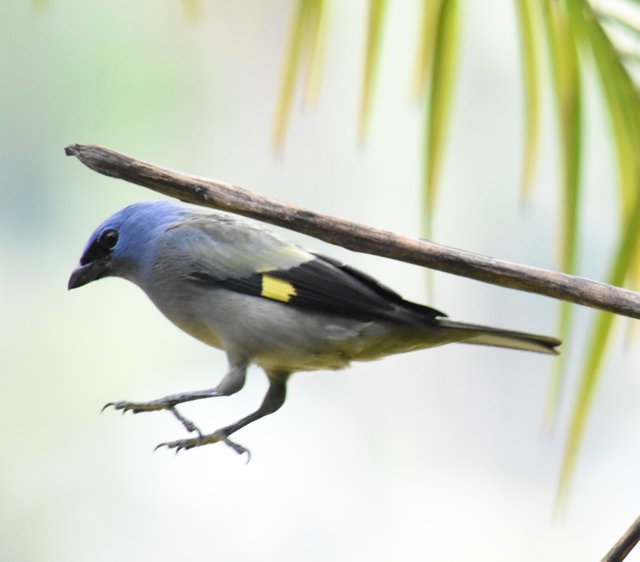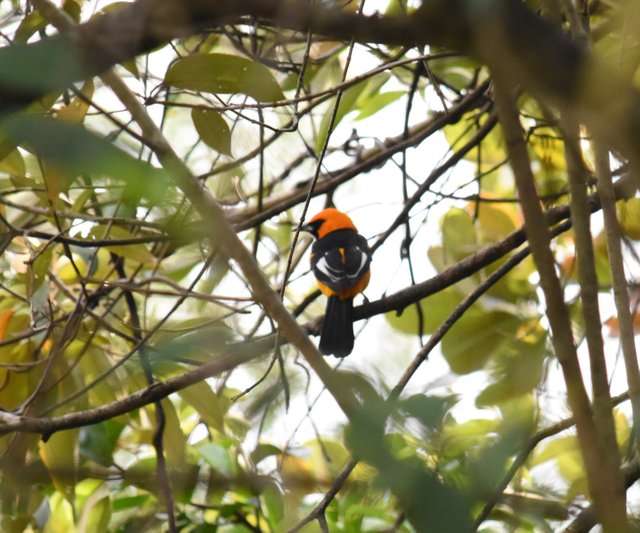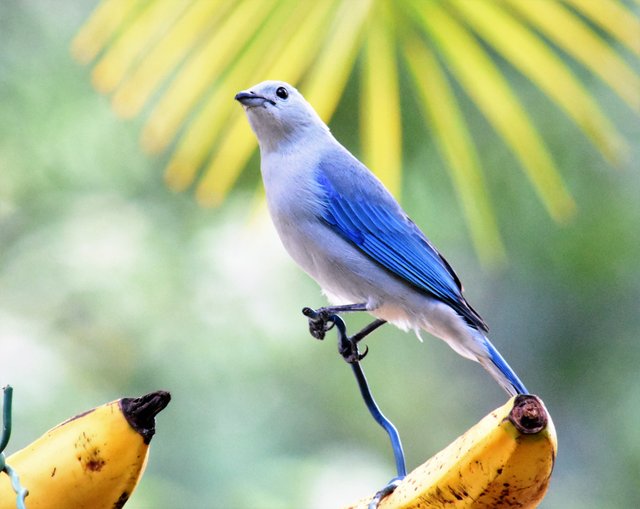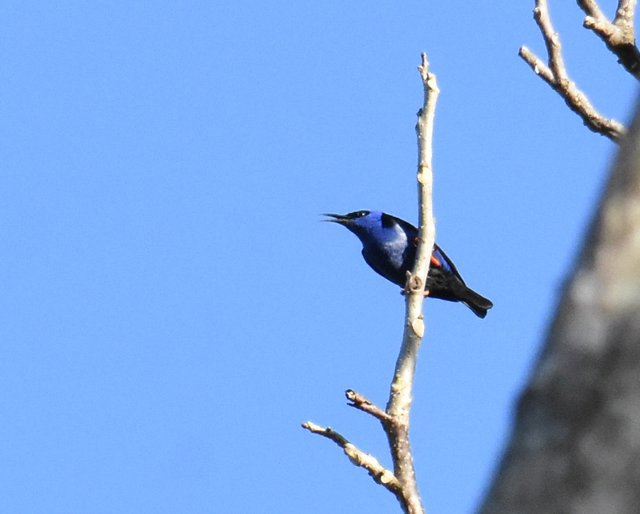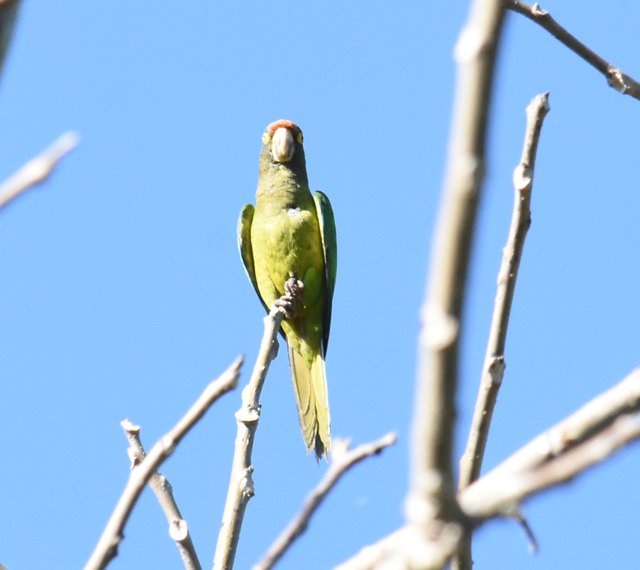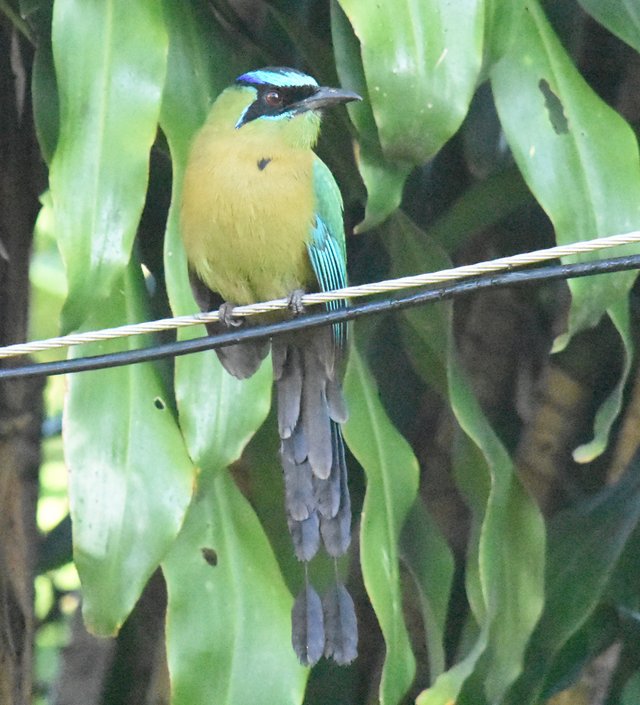Guatemala Birding Day 3
Yellow-winged Tanager Thraupis abbas coming in to land at the banana feeder at Los Torrales.
Day 3 of my Guatemala trip was spent at the Los Torrales Reserve Atitlan Volcano https://www.tarrales.com/ , and it was really nice to spend a full day birding with no travel. To put the place in perspective, Los Torrales was the first area in Guatemala where the private ownership embraced the idea of developing a working coffee plantation which could also function as a birder-friendly and more importantly bird-friendly private reserve. The owners take great pride in keeping the reserve open to birders, and at the same time a viable family business. They have several well maintained roads/trails that serve dual functions, allowing birders access to prime habitat while also serving as functioning work roads for their employees. They take care of not only their own private land, but are stewards of the entire Volcan Atitlan. This is prime habitat for several endangered endemic species.
Spot-breasted Orioles * Icterus pectoralis* were the most common resident oriole at Los Torrales.
We began the day by driving well up onto the side of the mountain, to about 4500 feet elevation from about 2500 feet where the lodging and dining area is located. At our first stop we spent over an hour enjoying the dawn birding, and especially looking for a tough to find endemic, the Azure-rumped Tanager. After some effort Claudia heard the bird in a nearby tree, and we both watched one individual fly from overhead across a wide and deep canyon only to disappear into a Strangler-fig tree on the far side of the canyon. We did have perfect light on the bird flying away, and got nice looks at the azure colored rump, and the dark wings. The dark wings separate it from the similar and much more common Blue-gray Tanager.
Blue-gray Tanagers Thraupis episcopus are common throughout much of their widespread range in Central America, but I love their understated elegance.
We also had nice looks at the White-faced Ground Sparrow.
We spent the rest of the morning at this stop and a couple of others, seeing lots of cool birds, but most were hard to get good photographs. Maybe my most fun shot was this male Red-legged Honeycreeper Cyanerpes cyaneus:
We returned for lunch, and spent some midday time watching the feeders. They simply hang a rack of bananas up and many birds come to feed. They have tried hummingbird feeders, but the aggressive Cinnamon Hummingbird just dominated the sugar-water feeders, so they instead planted lots of flowering bushed that the hummers love, and we patrolled these looking for a Blue-tailed Hummingbird, a very look-alike species to Bereline Hummingbird, which is almost identical except for having a rufous-colored tail. No success, maybe tomorrow.
Orange-fronted Parakeets Eupsittula canicularis were less common than Orange-chinned Parakeets Brotogeris jugularis, but gave me closer looks for a photo. In flight they have pointed tails and lack the brownish wing patches of the OCPA when perched.
After a siesta we took a nice walk on a loop near the lodging, finding a Broad-winged Hawk, several Lesson’s Motmots, Collared Aracara, Masked Tityra, and nice looks at several other birds. Fading light made photos tough, but I had such nice photo opportunities at the feeders, I feel very satisfied with my camera work today.
Lesson's MotmotMomotus lessonii
A shout out to Claudia Avendano at https://www.cayaya-birding.com/ for leading such an excellent trip.
Good birding. Steem on!
